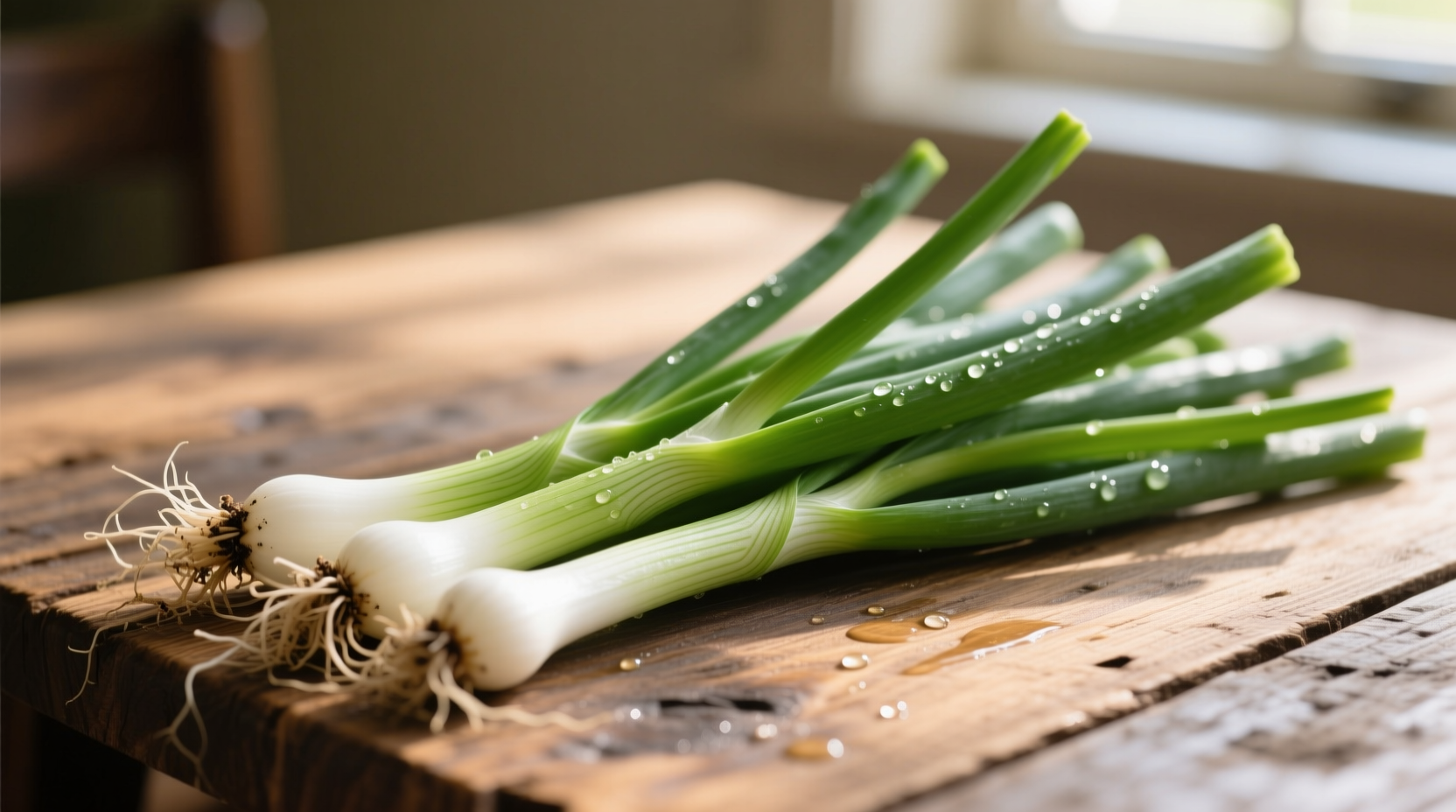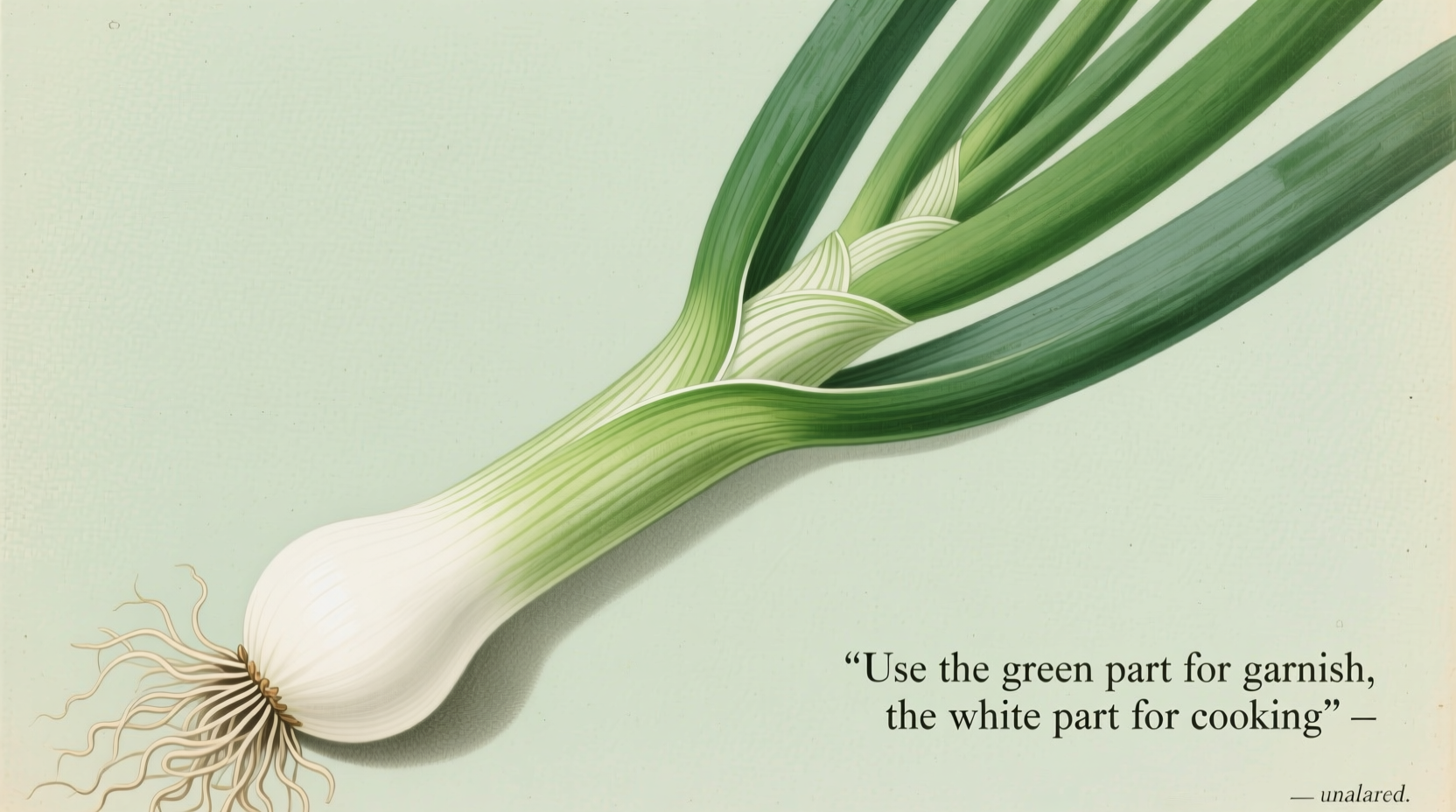Understanding how to properly utilize each part of the green onion can transform your cooking from ordinary to exceptional. As a professional chef who's worked with ingredients at every level from Michelin-starred kitchens to home cooking demonstrations, I've seen how many home cooks unnecessarily discard valuable parts of this versatile ingredient.
Green Onion Anatomy: What You're Working With
Green onions, also known as scallions or spring onions (Allium fistulosum), consist of two main edible portions that many cooks mistakenly treat as interchangeable. Each section has distinct flavor profiles, textures, and optimal culinary applications that, when understood, can elevate your dishes significantly.
The white bulb section contains higher concentrations of sulfur compounds, giving it that characteristic sharp onion bite. As you move up the stalk toward the green tips, the flavor gradually becomes more grassy and mild. This gradient of flavor intensity is precisely why professional chefs treat these sections differently in the kitchen.
| Green Onion Part | Flavor Profile | Texture | Best Culinary Applications |
|---|---|---|---|
| White bulb and lower third | Strong, pungent, sharp onion flavor | Firm, crisp | Sautéing, stir-frying, soups, stocks, bases for sauces |
| Middle section (transition zone) | Moderate onion flavor with subtle grassiness | Slightly tender | Add during last few minutes of cooking, omelets, quiches |
| Green tops (upper two-thirds) | Mild, fresh, grassy flavor | Tender, delicate | Garnishes, finishing touches, salads, cold dishes |
Maximizing Flavor: When to Use Each Part
The key to unlocking green onions' full potential lies in understanding when to deploy each section based on your cooking method and desired flavor profile. This isn't just culinary theory—it's practical kitchen wisdom that transforms how ingredients behave in different cooking scenarios.
White Portions: Building Flavor Foundations
The white bulb and lower third of green onions contain the highest concentration of allyl sulfides, the compounds responsible for that characteristic onion pungency. When exposed to heat, these compounds transform through the Maillard reaction, creating complex savory flavors that form the foundation of countless dishes.
Professional chefs consistently use the white portions as the aromatic base in stir-fries, soups, and sauces. According to research from the Culinary Institute of America, adding white scallion sections to hot oil before other ingredients creates a flavor foundation that permeates the entire dish. This technique works because the white portions can withstand higher temperatures without burning, allowing their flavors to fully develop.
Green Portions: Finishing Touches That Shine
The green tops contain significantly fewer sulfur compounds and more chlorophyll, resulting in that fresh, grassy flavor profile. Their delicate texture makes them unsuitable for prolonged cooking, but perfect for adding bright, fresh notes at the end of preparation.
When preparing Asian cuisine, I always reserve the darkest green sections for garnishing finished dishes. The visual contrast against richly colored foods enhances presentation while adding that final aromatic note. For cold applications like salads, dips, or dressings, the green portions provide onion flavor without overwhelming other ingredients—a technique documented in multiple culinary textbooks including McGee's On Food and Cooking.

Proper Preparation Techniques
How you prepare green onions significantly impacts their performance in your dishes. Many home cooks make the mistake of treating them like regular onions, which leads to inconsistent results.
Cleaning Method Matters
Unlike bulb onions, green onions grow partially underground, meaning soil can accumulate between their layers. The proper cleaning technique involves:
- Trimming roots from the very bottom
- Separating white and green portions at the natural transition point
- Soaking white portions in cold water for 2-3 minutes to dislodge soil
- Gently separating green layers to rinse thoroughly
- Drying on a clean towel before use
This method ensures you don't waste any usable portions while maintaining food safety standards recommended by the FDA for produce preparation.
Cutting Techniques for Different Applications
The way you cut green onions affects both flavor release and visual presentation:
- Thin diagonal slices (for white portions): Maximizes surface area for cooking, ideal for stir-fries
- Small fine dice (for white portions): Creates even distribution in sauces and fillings
- Long thin strips (for green portions): Perfect for garnishing soups and rice bowls
- Chiffonade cut (for green portions): Creates attractive ribbons for salads and cold dishes
Common Mistakes to Avoid
Even experienced home cooks frequently make these errors when working with green onions:
- Discarding the green portions: You're throwing away up to 70% of the usable ingredient
- Using green portions in early cooking stages: They become bitter and lose visual appeal
- Overcooking white portions: Leads to unpleasant bitterness instead of sweet caramelization
- Not separating the parts: Results in uneven cooking and inconsistent flavor distribution
Storage Techniques for Maximum Freshness
Proper storage extends the usable life of green onions significantly. The USDA recommends treating them differently than bulb onions:
- Store unwashed in the refrigerator's crisper drawer
- Place cut ends in a glass of water (like cut flowers) and cover loosely with a plastic bag
- Change water every 2-3 days to prevent bacterial growth
- Use within 7-10 days for optimal flavor and texture
This storage method, validated by food safety experts at Cornell University's Food Science Department, keeps green onions crisp and flavorful significantly longer than traditional storage methods.
Putting It All Together: Practical Applications
Understanding green onion parts isn't just theoretical—it directly impacts your cooking results. Here's how to apply this knowledge in real kitchen scenarios:
- For stir-fries: Add white portions when heating oil, green portions in the last 30 seconds
- For soups and stews: White portions go in early, green portions as a garnish
- For omelets and frittatas: White portions mixed in, green portions sprinkled on top
- For salad dressings: Use primarily green portions for milder flavor
- For marinades: White portions provide stronger flavor penetration
Professional chefs consistently report that separating and properly using each part of the green onion creates more complex, layered flavors in finished dishes—a technique that home cooks can easily adopt with immediate results.











 浙公网安备
33010002000092号
浙公网安备
33010002000092号 浙B2-20120091-4
浙B2-20120091-4